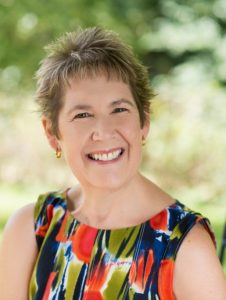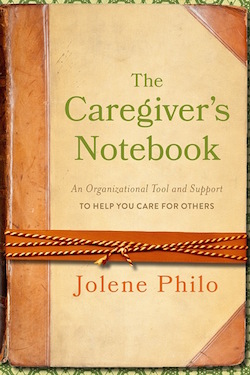
by jphilo | Jan 12, 2016 | Top Ten Tuesday
 For some reason, the first week of January 2016 was a highly productive one for a certain inhabitant of our gravel road. Had I known on January 1 what I know now, the following New Year’s Resolutions would have been listed and checked off in 7 short days, rendering the remaining 359 guilt and fancy-free.
For some reason, the first week of January 2016 was a highly productive one for a certain inhabitant of our gravel road. Had I known on January 1 what I know now, the following New Year’s Resolutions would have been listed and checked off in 7 short days, rendering the remaining 359 guilt and fancy-free.
10. Come to grips with getting older after learning of several former co-workers and present dear friends, who are our age contemporaries, are dealing with age-related health conditions.
9. Cut back the geraniums wintering over in the upstairs bedrooms and water them less so the woody stems stop rotting.
8. Send out Christmas cards as a staunch proponent of the better-late-than-never school of thought.
7. Find a group to hand quilt Mom’s remaining quilting projects, sewn together by my daughter a year ago, and which have been lurking in the corner of the guest bedroom ever since.
6. Launch a redesigned website full speed ahead and damn the torpedoes that make half the archived posts disappear for a few days.
5. Garner a 100 new likes on my Facebook author page thanks to EA/TEF parents who read the first EA/TEF Awareness Month post at DifferentDream.com.
4. Eat a few Kirkland non-dairy chocolate covered almonds every day.
3. Watch as many seasons of Downton Abbey as possible in preparation for watching Season 6.
2. Call a dear friend in Harding County, South Dakota and make plans to visit next August during the 100th Anniversary county fair.
1. Record personal information in your copy of The Caregiver’s Notebook so you can tell people attending caregiver organization workshops to do the same without feeling like a hypocrite.
What New Year’s resolutions would you make in hindsight? Leave a comment.
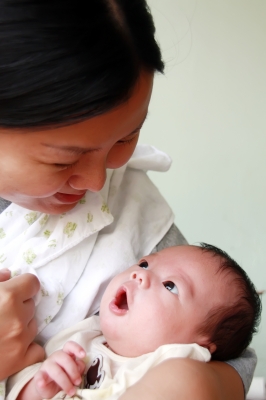
by jphilo | Oct 3, 2014 | Different Dream for My Child, Vlog Series

Friday’s here, so it’s time for a new episode in the Different Dream vlog series for parents of kids with special needs. Though if you’re not a parent, you are welcome to stick around for a peek at what it’s like to raise children with special needs and disabilities. This post is the last one in the diagnosis section of A Different Dream for My Child: Meditations for Parents of Critically or Chronically Ill Children.
It’s called “Aching Arms,” and I had to record it two times before I could get through it without crying. The memory of holding our baby without a single tube or wire makes my eyes fill with tears every time. If you get teary at stories like that, grab a tissue before you watch the video below.
You can watch the “Aching Arms” vlog post at DifferentDream.com.
Photo Credit: phanlop88 at www.freedigitalphotos.net
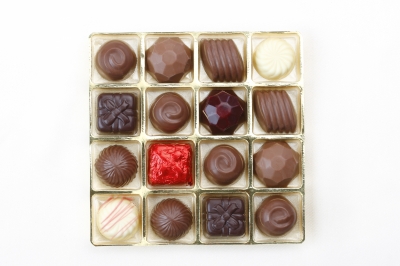
by jphilo | May 16, 2014 | Current Events

The past few weeks have been filled with a buzz of activity at our house. Hiram’s siding the garage and reprising his Man of Steel role in preparation for Dam to Dam in a few weeks. My time’s been divided between correcting proofs for The Caregiver’s Notebook and conducting interviews for a book about post-traumatic stress disorder (PTSD) in children. Throw high school graduation season into the mix and, like I said, things are buzzing around here.
No time for sitting around and eating bon bons.
And hardly time, as has been mentioned in other blog posts this week, for writing new blog posts either. But enough time to contemplate yesterday’s guest post by Maggie Gale over at www.DifferentDream.com, my website for parents of kids with special needs.
Maggie’s post is an amazing story about her daughter Lois.
Lois had a TE/EAF repair shortly after birth, the same anomaly and repair our son had. In her post Maggie describes how Lois remembered and grieved about those early events. Ten years ago, I would have poo-pooed her story, but not anymore. Not after our son was treated for PTSD caused by his early medical experiences.
Kids remember more and further back than we think.
Traumatic memories remain especially vivid and affect our children more than we want to believe. Which is why my days are filled reading books about PTSD ink kids, with interviews of parents who have kids with PTSD, and of experts who treat kids with it.
Even though I’d rather be eating bon bons and writing funny blog posts.
So today, instead of an original and finely crafted post, I’d like to direct you to Maggie Gale’s guest post, Do Kids Experience Grief about Their Special Needs. It’s more disturbing than funny. More heart-wrenching than hilarious. And important enough to the well-being of children to make bonbon and blog posting sacrifices seem as insignificant as they really are.
Photo Credit: John Kasawa at www.freedigitalphotos.net
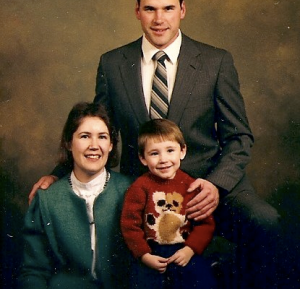
by jphilo | May 20, 2011 | Family

Yesterday morning, I had a vivid just-before-waking dream. Our son, about three years old, snuggled in bed between Hiram and me.
He grinned when we called him the peanut butter in our family sandwich, giggled and squirmed when we tickled him. Along with his giggles, I heard the wheezy, asthmatic sound of his breathing – a condition called tracheomalacia which went along with his esophageal birth defect (EA/TEF) – something the doctors assured us he would outgrow as the cartilage around his bronchial tubes hardened.
I woke, disoriented and twenty-six years older than in my dream. I left our bed, where my husband, but no son, lay sleeping. I stumbled through our house, not the one we shared with our toddler son. I couldn’t shake the dream. It lingered all day long. The odd sound of our son’s breathing and the sweetness of his small, high voice and delighted giggles echoed in my memory. All day, I missed our child, ached for his small body crowding in between us, longed for his little boy, sweaty smell. More than once, tears came to my eyes as the realization that those years and those sounds, even the wheezy ones caused incessant worry, were gone forever.
Because the doctors were right. Our son outgrew the tracheomalacia around the time he started kindergarten. He left his wheezy gurgles behind, along with his fascination with dinosaur bones, his adoration for Mr. Rodgers and the Land of Make Believe, and his love of Legos. (Well, strike that last one. He still groves over Legos now and then.)
In a few days, our boy turns twenty-nine, and I rejoice in the man he has become. His face is whiskered, his step confident, his laugh deep, his voice resonant, his breathing quiet. He is a good man – loving, thoughtful, creative, and caring.
But he will never be three again,
never jump into bed between us again,
beg to be tickled again,
delight to be the peanut butter in our family sandwich again,
giggle with his wheezy gurgle again.
So this day, in the wake of a most vivid and lovely dream,
I am grieving for days that can never be again.
I am missing our little boy.
I am learning what it means to be a mom.
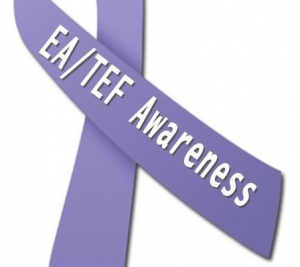
by jphilo | Jan 6, 2011 | Current Events

Are you looking at the jumble of letters in the title and wondering if you can stomach another helping of alphabet soup? Believe me, if you were afflicted with EA/TEF, you wouldn’t be eating alphabet soup or anything else without emergency surgery.
EA stands for Esophageal Atresia, which is the new and improved name for a Tracheoesophageal Fistula (TEF), the condition our son was born with. Very briefly, esophageal atresia (or TEF for old timers like me) is a congenital defect. In most cases, the upper esophagus ends and does not connect with the lower esophagus and stomach. The top end of the lower esophagus connects to the windpipe. That’s the version Allen had. Immediate, major surgery was required to correct his plumbing issues, as is the case with all babies born with EA/TEF.
To read more about the condition, more information is available at www.DifferentDream.com, my website for parents of kids with special needs. You might also like this FaceBook page where parents of EA/TEF kids share experiences and seek advice: Bridging the Gap of EA/TEF. Since finding the group and it’s founder, Lori Dorman McGahan, I’ve swapped stories with parents whose vocabularies include words like seal cough, tracheomalacia, sphincter valve, and fundoplication. It is way cool.
During January, I’ll be featuring some of these families at the Different Dream website, if you’re interested. Many of their stories make Allen’s sound like a walk in the park. So take a gander if you like. And if you know a family dealing with EA/TEF, please pass on the information to them. It took me almost 28 years to connect with parents who identify with what we went through. No parent should ever have to wait that long again!
Here’s a note from Kristin Cooley that clarifies some of the information I gave about EA/TEF. I would have posted it at as a comment, but can’t get it to work. If anyone else is having the same trouble, please email me. The odds are slim that I can fix what’s wrong, but it’s worth a try. Now for Kristin’s information:
Hi, Jolene! Thanks so much for taking the time to help out the cause!!
I wanted to say that your second paragraph leads readers to believe that EA and TEF are the same thing; this is not the case. In fact, they are two completely distinct anomalies. EA, or esophageal atresia, is the ending of the esophagus in a blind pouch before it connects to the stomach. TEF, or tracheoesophageal atresia, is the abnormal connection of the esophagus to the trachea. While in a majority of cases they do co-exist, there are instances when EA occurs as an isolated anomaly, especially in long gap patients.
I know your son was born with EA/TEF, so I know the cause means as much to you as any of us. I just felt compelled to bring this to your attention because many of us will share your website with our friends and family who have a very basic understanding of this birth defect. So, for those of them who are trying to grasp the complexity of the birth defect, I wanted to make sure they got complete information.
Thank you,
Kristin

 For some reason, the first week of January 2016 was a highly productive one for a certain inhabitant of our gravel road. Had I known on January 1 what I know now, the following New Year’s Resolutions would have been listed and checked off in 7 short days, rendering the remaining 359 guilt and fancy-free.
For some reason, the first week of January 2016 was a highly productive one for a certain inhabitant of our gravel road. Had I known on January 1 what I know now, the following New Year’s Resolutions would have been listed and checked off in 7 short days, rendering the remaining 359 guilt and fancy-free.



